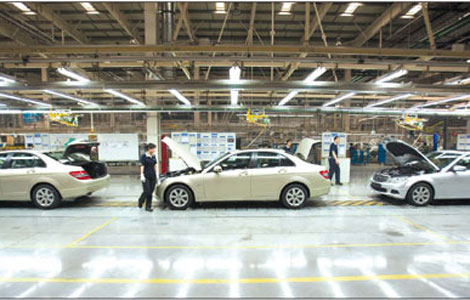Op-Ed Contributors
How to attract more global tourists
Updated: 2011-03-02 07:43
By Grayson Clarke (China Daily)
One of the targets China has set itself in the 12th Five Year Plan (2011-2015) is to rebalance its economy to generate more wealth from its services sector. Tourism is one of the most important parts of the services sector and many Chinese cities, notably Shanghai, have set very ambitious targets for themselves to make tourism a major plank of their local economies.
The domestic tourism industry has been enjoying stellar growth after a brief lull because of the global financial crisis. But what about China's international tourism industry? It too has seen growth, but not to the extent that would suggest China is on the way to becoming the world's leading tourist destination.
Let's start with the positives. China is a stable country. It has a low crime rate, good transport links and decent signage in English for foreign tourists. It has its fair share of UNESCO World Heritage sites, natural and man-made both, and a vibrant culture. And it is part of the fastest growing economic region in the world with a growing middle class and fast rising incomes.
But there are some problems, too. Like most big countries, China's best sites are scattered. Beijing is very well off with plenty of attractions for a tourist to stay a few days. The same cannot be said about many other cities. Of course, Shanghai has the Bund, Xi'an the terracotta warriors and Guilin the Li River, but they can keep tourists for just one day or a couple of days at the most.
Other great locations such as the Changbai Mountain in Jilin province or the Dunhuang Grottoes in Gansu province are far from major urban hubs, and demand plenty of time and money to reach.
Many local governments have come up with the idea of "creating" tourist attractions in areas where they are scarce. So there is a plethora of tourist attractions such as water wheel parks, silk museums and umpteen massive statues. These sites may attract domestic tourists but do not satisfy the demands of international holidaymakers.
That brings us to the question of cost. China is no longer a cheap destination thanks to the strengthening yuan and rising commodity prices. Getting around by plane is often expensive. If my family of four members, staying in Beijing, wants to visit Jiuzhaigou, the famous natural scenic spot in Sichuan province, it has to spend at least $2,000. But if we were living anywhere in Europe, we could have visited Switzerland or Austria for a week for the same amount. Even if Jiuzhaigou is better than all the alpine valleys, it is pretty hard to justify the cost of getting there.
Then comes the quality issue. Yes, international brand hotels are as good in China as they are anywhere else in the world, but most of them are expensive. Some Chinese "five-star hotels" in reality offer only international three-star comforts. Though the basic facilities are there, they are spoilt by some goofy features such as karaoke only bars, little or no Western food at breakfast, and the absence of staff members on the front desk who have a decent command of English or other foreign languages - which is a real disappointment given the number of Chinese learning English.
So what should tourism authorities do? First, they must understand that for most of the foreign tourists visiting China will be a lifetime experience. Such people would want to see the best instead of a series of second-rate attractions. The focus should thus be on developing tourist hubs with site-packed itineraries, and making transport links tourist-friendly and reducing prices, particularly of air tickets.
One thing that some national carriers such as Australia's Quantas and Brazil's Varig have done is to issue cheap five- or seven-leg domestic tickets either independently or as add-ons to international tickets. Europe has its inter-rail ticket, something that China can copy because of its ever-increasing high-speed railway network.
Second, starting with each of the domestic hubs, the tourism authorities should develop mid-range priced hotels to attract more international guests. The development should focus more on service than physical changes. The idea is to make sure that some staff members in every hotel speak English or another international language, the add-ons such as one-day sightseeing tours are genuine full-day tours instead of being coupled with visits to factories, and tourist guides speak at least one foreign language well and know how to handle a group.
In short, to attract more international tourists, the authorities have to offer them a better deal.
With the continuing rapid growth of the domestic tourism industry, China may be tempted to think that apart from the prestige factor, attracting more international tourists is not important.
But the authorities should remember that in the near future more Chinese tourists will have the money, confidence and the opportunity to travel abroad. They will speak better English, plan their trips on the Internet and be able to visit more places outside the country. And when they do and see the real international standards they may not want to go on a holiday in China any more. What China does for international tourists today will affect its ability to maintain the growth of the domestic tourism industry in the future.
The author is resident fund management expert with the EU-China Social Security Reform Project.
E-paper

Factory fever
Despite auto manufacturing bubble scare, car giants gear up expansion of factories.
Dressed for success
Fabric of change
High spirits
Specials

Earthquake Hits Japan
A massive 8.8 magnitude quake hit the northeast coast of Japan on March 11,2011.

NPC & CPPCC sessions
Lawmakers and political advisers gather in Beijing to discuss major issues.

Slide: Japan quake
Devastating earthquake and tsunami left millions without water, electricity, homes or heat.
